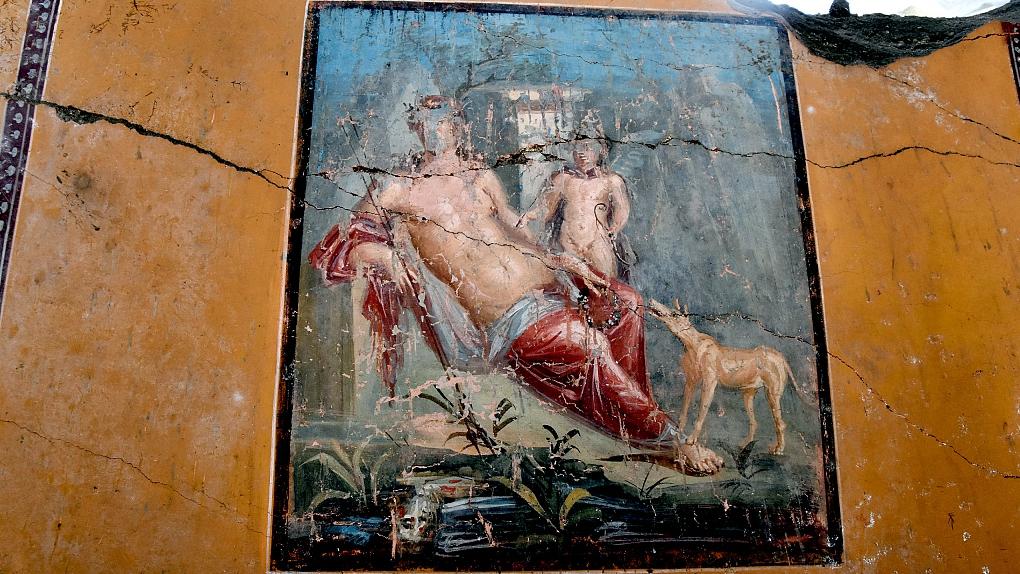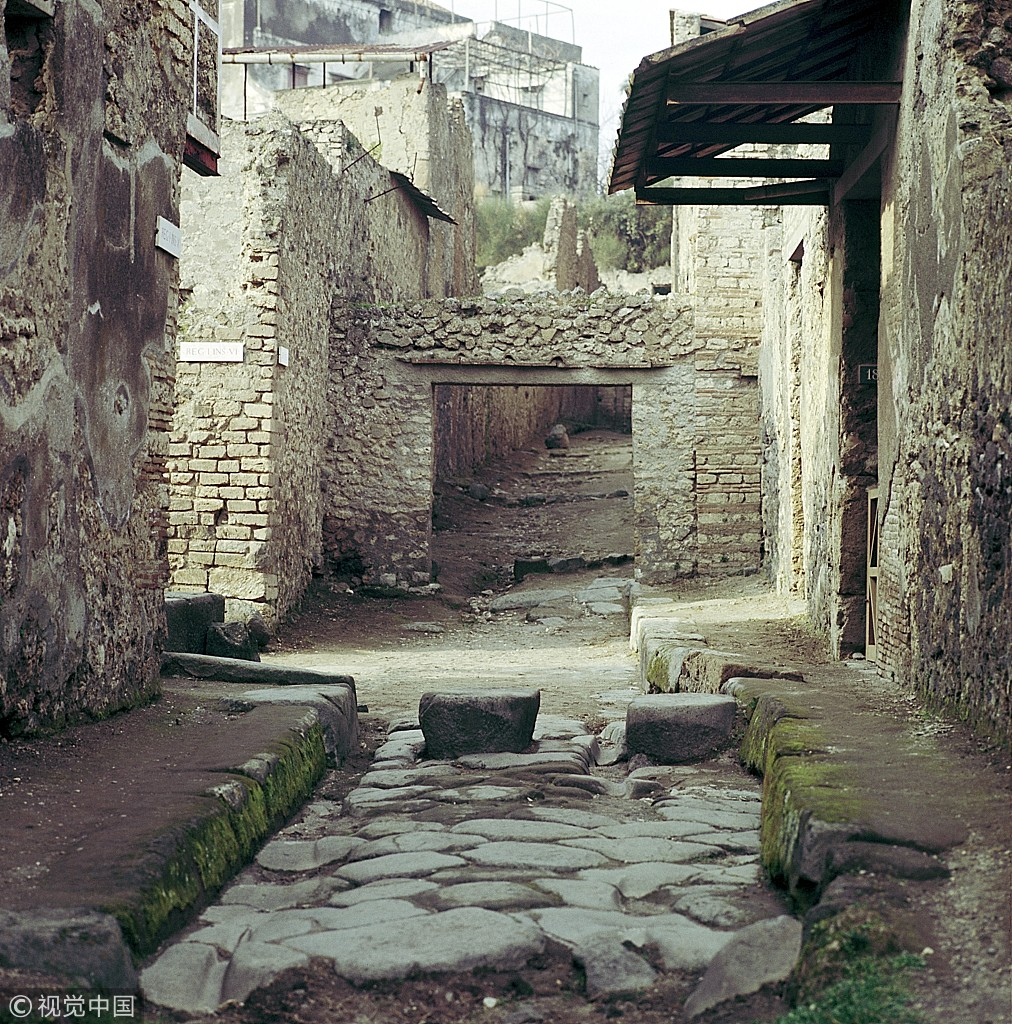
Culture
15:19, 16-Feb-2019
Well-preserved fresco of Narcissus found in the ruins of Pompeii
Jiang Qingrui

A fresco of Narcissus, a self-obsessed youngster in Greek mythology, has been found in a house in the ruins of Pompeii, Italy.
(For more pictures, click Archaeologists uncover fresco of Narcissus amid ruins of Pompeii.)
The announcement was made on February 14. It was discovered in an atrium of a richly decorated bedroom in the house, where another fresco depicting the sensual scene of Leda and the Swan, another story in Greek mythology, was found last November, according to the Guardian.

An archaeologist cleans a newly-discovered fresco, representing Greek mythological princess Leda and a swan, in an ancient Pompeii bedroom, Italy, November 19, 2018. /VCG Photo
An archaeologist cleans a newly-discovered fresco, representing Greek mythological princess Leda and a swan, in an ancient Pompeii bedroom, Italy, November 19, 2018. /VCG Photo
The ancient painting was quite well-reserved, full in bright color and both figures and environment in the background are clearly recognizable. There are only some small shed-off pieces and cracks.
In Greek myth, the main figure, Narcissus, was a hunter who has a stunningly handsome look. He was not interested in other people's courtship as to refuse Echo, a nymph's love. Echo died in sadness with only her echo left, and the goddess of revenge decided to punish him.
He was induced to a pool, where he saw his reflection and couldn't help but fell in love with it. Struggling in the love that was not to be required, he died and turned into a flower.

A picture of Narcissus looking at his reflection in a water pool in the Collection of Palazzo Barberini, Rome. /VCG Photo
A picture of Narcissus looking at his reflection in a water pool in the Collection of Palazzo Barberini, Rome. /VCG Photo
The story was a quite common theme in this city during the first century.
"The beauty of these rooms has led us to modify the project and continue the excavation," said Alfonsina Russo, the director of the site, according to the Guardian.
"In the future, this will allow us to open at least part of this Domus to the public. Its excavation has been possible in the context of the broader intervention of stabilization and re-profiling of the excavation fronts, overseen by the Great Pompeii Project."

A street in the ancient city of Pompeii, Italy. /VCG Photo
A street in the ancient city of Pompeii, Italy. /VCG Photo
Located in southern Italy now, Pompeii was an ancient Rome city. Listed in the UNESCO World Heritage Site, the city is one of the most visited historical sites in Italy.
It was buried by a thick layer of ash and lava after an eruption of Vesuvius, a volcano near the city. The tragedy left many unable to escape, and the ancient lifestyle was preserved as it was to present days.
(Top Photo: A stunning fresco is found depicting Narcissus looking at himself in the water, falling in love with his reflection in Pompeii, south Italy, February 14, 2019. /VCG Photo)

SITEMAP
Copyright © 2018 CGTN. Beijing ICP prepared NO.16065310-3
Copyright © 2018 CGTN. Beijing ICP prepared NO.16065310-3